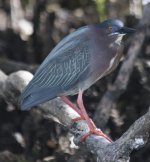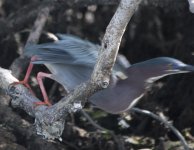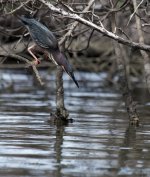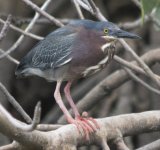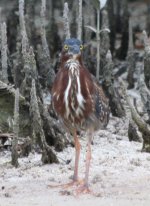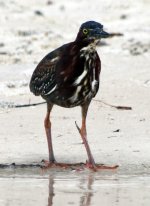IDidiot
Well-known member

I often kayak on a lagoon in the central Gulf Coast of Florida. I had three encounters with green herons (which I'd never once seen before in the lagoon). Anyway, I chose two (awful) shots of the first encounter, two of the second encounter, and 2 of the third encounter. I'm thinking they are two different individuals. After putting these together I think the first 4 shots are one bird. As I didn't see any two within one eyeshot, I could only log 1 on eBird. Opinions?




